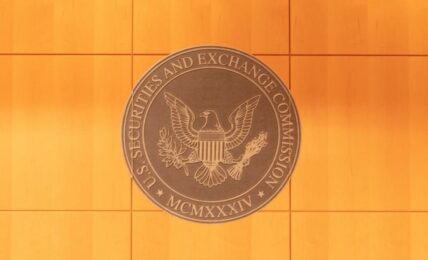By: Sol Salinas, Executive Vice President, Sustainability Lead for the Americas, Capgemini
With the increase in extreme weather events all over the world, paired with rigorous regulations coming into effect, organizations are under constant pressure to respond and explore how they can transform their business to become truly sustainable.
The good news is that for 63% of executives, the business case for sustainability is clear across their organization, according to new research.
For enterprises to transform effectively and successfully, leaders need to stay ahead of the curve and be aware of the shifts taking place to understand how expectations around sustainability may shape their company’s future.
Below are six steps executives should consider taking when laying the groundwork for an enterprise-wide sustainability transformation.
Make sustainability a priority in the boardroom
With the term ‘sustainability’ now mainstream in the corporate world, going green shouldn’t be an afterthought in any company. It should be a key item of discussion in the boardroom agenda to help inform the business’ corporate strategy.
Both the board and the C-suite need to be on the same page on whether they accept sustainability as an investment opportunity for their company. A clear sustainability business case should also be well articulated and understood by the board, management team, and employees as well as external audiences such as investors and customers.
In fact, studies confirm that 88% of executives at organizations with engaged boards say that, by 2040, they will have completely new business models that are more sustainable.
Investing in sustainability initiatives for your organization and making it top of mind in the boardroom will also support regulators’ push for “double materiality.” This concept describes how corporate information can be important both for its implications about a firm’s financial value, and about a firm’s impact on the world at large, particularly when it comes to climate change and other environmental impacts.
According to The Corporate Sustainability Reporting Directive (CSRD) requirements, it is mandated for organizations to conduct a double materiality assessment, which in turn helps them determine which sustainability issues are material and should be included in their emissions reporting.
Incorporate social sustainability in the business strategy
Social sustainability should also be incorporated in the boardroom agenda and into the corporate strategy, as the United Nations Sustainable Development Goals (SDGs) build momentum and climate and social objectives become intertwined.
The SDGs cover poverty, hunger, health and wellbeing, education, gender equality, decent work and dignity, inequality, and peace and justice.
The United Nations Global Compact says that within social sustainability, there are four main audiences that organizations must consider: employees, customers, supply chain workers, and local communities.
What’s more, research reveals that over half (63%) of U.S. executives say their organization is increasingly focused on social sustainability.
For example, the research cites, Verizon, a U.S.-based wireless carrier company. It partners with organizations focused on underserved communities to recruit diverse talent and also fosters inclusion through ongoing diversity and inclusion training and employee resource groups. Therefore, their U.S. workforce is now nearly 60% women or people of color.
Measure Scope 3 emissions accurately
For organizations to comprehend their Scope 3 emissions and identify levers for decarbonization, they should consider a data-centered approach and focus on:
Identifying Scope 3 areas focusing on critical data and measurements
Creating a shared, single source of emissions data that consolidates the storage and collection of Scope 3 data
Preparing teams with skills and tools to understand and use Scope 3 emissions data in business decisions
Circular and inclusive design
If you’ve heard of the term ‘circular economy’, then the term ‘circular design’ will be familiar. Circular design is the act of committing to reusing products instead of using the item and throwing it away. This form of design allows designers to adopt sustainability and respect for the environment.
Organizations should consider integrating circular principles in their business models to reduce waste, extend the lifespan of their products, and appeal to sustainability-conscious consumers.
Close the perception gap
As sustainability initiatives become more prevalent across companies, consumers are becoming more skeptical of greenwashing. In fact, 50% of Gen Z consumers believe that organizations or brands are greenwashing. However, executives do not appear overly concerned with accusations of greenwashing. About half (51%) of leaders follow external guidelines on responsible communication and advertising to avoid such issues.
If a company is discovered that they’ve promoted false or misleading information to their consumers, this can affect the bottom line, hinder public confidence, and risk big fines from regulators.
To combat greenwashing, businesses must foster transparency by closing the gap between stated goals and concrete actions.
Be open to different and new technologies
There are a wide range of technologies that can accelerate the transition to a green economy. More than half (54%) of executives say that their organization uses technology such as AI, automation, or digital twins to achieve their sustainability agenda.
However, AI in particular is quickly gaining momentum in the fight against climate change. AI can make more precise weather predictions, track air quality, and measure the carbon footprint of products/services or even supply chains, while enabling smarter decision-making and real-time monitoring.
Recent research shows that nearly all executives (96%) stated that generative AI is a hot topic of discussion in their respective boardrooms, making it most likely the fastest new technology to garner such high-level interest.
Organizations should also explore how generative AI can improve the accessibility and inclusivity of products and services. This will require that individuals with disabilities or other impairments play an active role and have a voice in shaping generative AI’s role within their company.
Becoming a sustainable organization takes time, however it’s business leaders’ responsibility to ensure their company is ready to encounter hurdles along the way in order to join the journey towards a sustainable future.



